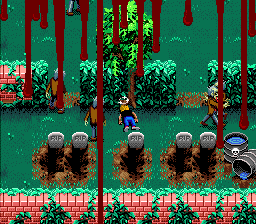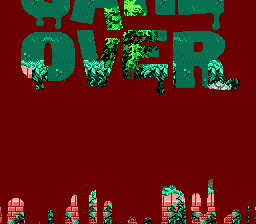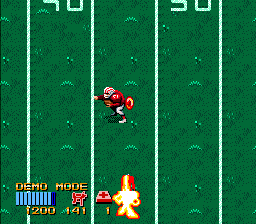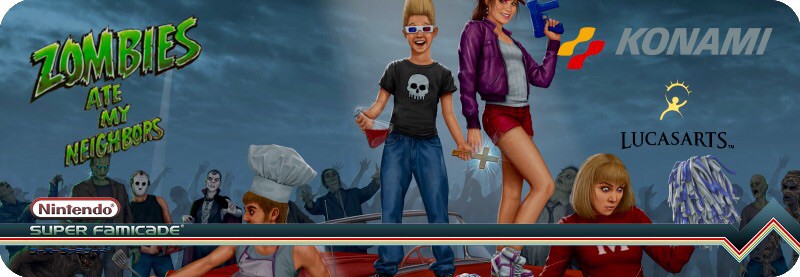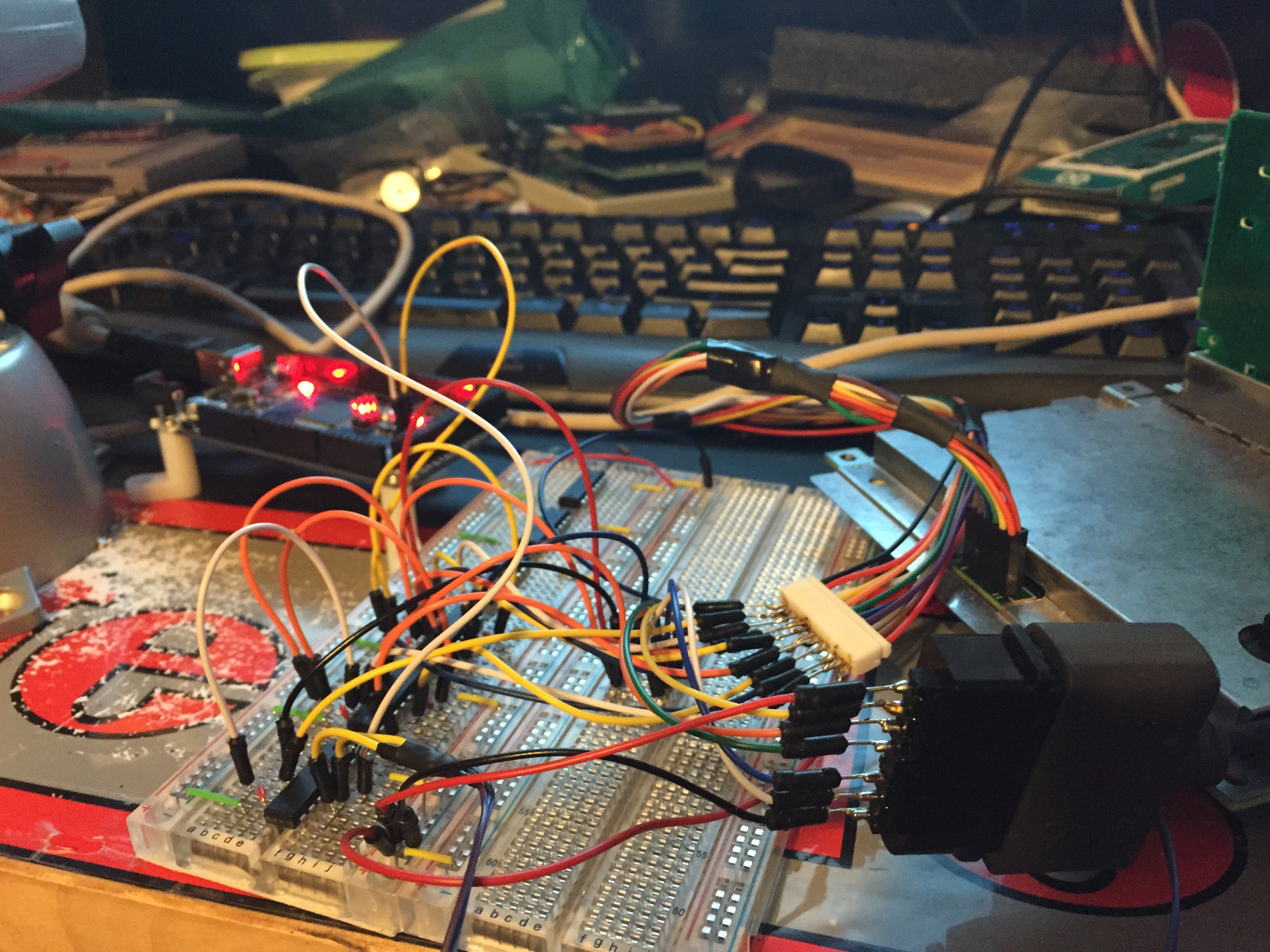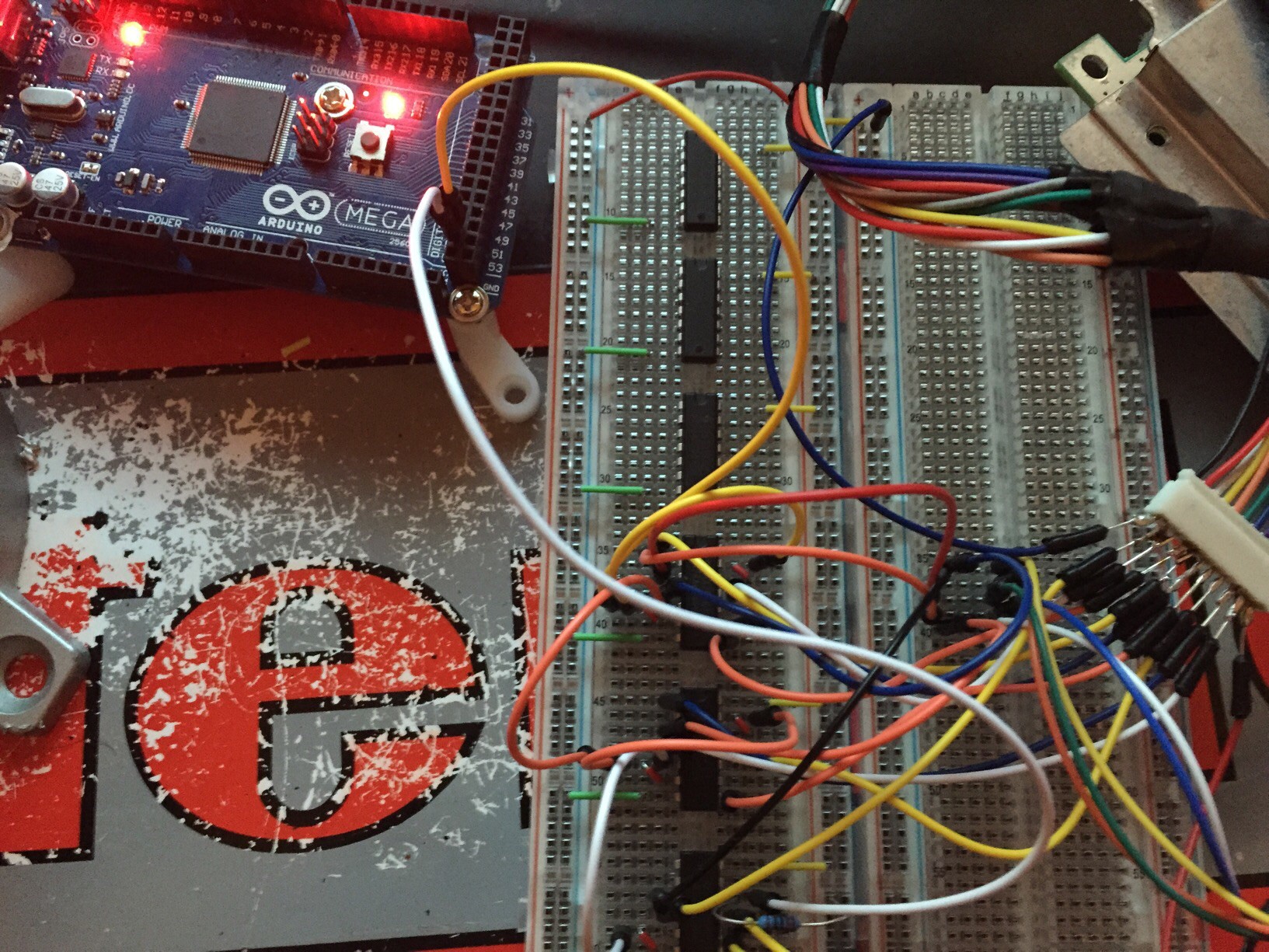-
Zombies ate my Neighbors
03/11/2016 at 18:55 • 0 commentsSo, as some of you may know, I've been working on my "Arcadization" of the SNES classic, "Zombies ate my Neighbors."
![]()
![]()
I actually started by de-censoring the blood on the game over screen, but that led me to dig deeper into the code.
To date, I've added HUD support for displaying the number of lives that are left for each character and even added SRAM support for saving of High Scores!
![]()
![]()
You may notice that the HUD has moved to the bottom of the screen as well. This is to distinguish it from the original game. That, and I kind of like it down there.
Next on my list:
- Will need to debug a few things regarding High Score saving.
- Enabling Coin-up support (one of the four extra inputs for each controller).
- Jumper options for the game (the final 3 inputs extra for each controller).
- Determine what jumpers/options will be available for the game.
- Coin-up mode will disable the password feature and display "INSERT COIN" instead of "PRESS START"
- I want to support 2P join-in mode. Currently, when in 2P mode, if one player loses all their lives, they cannot join in again until the final player gets a game over.
Some ideas for jumpers/game options:
- Determine how many lives are gained from coin-up.
- Enable free play/coin-up mode.
- Determine starting lives.
- Determine difficulty such as re-spawn rates, drop rates, enemy persistence.
-
Custom Controller PCBs
12/19/2015 at 03:34 • 1 commentI recently received my pcbs for the custom controller circuit I will be using (pictures added).
Essentially, the advantage to building a custom controller board rather than hacking up a generic SNES controller is:
- First, Stability. I've gone through several of those suckers and I always find a way to cause them to give up and die.
- Second, Extra features. A standard SNES controller can only handle up to 12 button inputs. However, after doing a bit of digging, it's possible for the SNES to make use of up to 16 buttons if the programmers made it so.
I'll be making some modifications to classic SNES games to support coin-up, and possibly other arcade features via the extra buttons. Stay tuned. I'll be posting schematics and a parts list soon. :)
-
Simplify?
03/28/2015 at 21:33 • 0 commentsAfter months of working on my design for the Super Famicade, I've come to the realization that I don't really need to use 4 separate SNES motherboards. In fact, it would probably speed things along if I changed the design to only use a single motherboard (negates the need for control switching, video switching-- which has been prototype'd and is working, but seems to be more evil than it should be). Instead, I will be focusing on either an SPI controlled multi-cart, or something similar... I want to be able to switch games without using any built-in menus, so it probably wont technically be a multi-cart, but I've changed my mind several times, so who knows... Rest assured, it will be better than it sounds. ;)
I plan on starting to build the cabinet within the next few weeks once the weather stabilizes a bit and we have some sunny, warm weather. I've had the parts for months, but I just haven't been motivated to work out in the cold garage. :)
I've been working on some RBG amp circuits... specifically designed for my small 13 inch CRT (for bench tests) and the 32 inch CRT-- neither of which have anything more than composite video as a standard feature. I've got some parts coming so I can finish up that part of the design.
-
Video Switcher
01/23/2015 at 14:11 • 0 commentsJust an update on my video switching situation. I was able to get the component video switcher working as expected by removing a few capacitors from the circuit on both the input and output channels. I'm using the digital audio line (modded) to carry the composite sync signal.
The switcher appears to boost the video signal, so I may end up not needing any other signal processing. Only one problem: One of the video channels appears to drop one entire color completely. I've checked for shorts and traced the issue to one of the ICs used to switch the signals.
I'm also working on the video overlay circuit... I still need to prototype the design, but I've got most of the circuit components I need.
What project would be complete without custom labels? :) The beautiful painting in the background comes from "Art by Bones". The label isn't the final version, but it shows a semi-standardized layout for different artwork elements.
![]()
-
Playing with power
12/23/2014 at 06:17 • 0 commentsim sure it has become clear to anyone reading this that I am the kind of guy that makes big plans. I like to set lofty goals for myself.
Over the past few weeks I've been researching several issues relating to quality ofthe video switcher. I have been planning to modify one I picked up that was originally designed to switch component video.
I am able to control switching of video out (rgb) along with switching out joystick control between consoles. Control switching appears to be working as expected.
I've got a bit of tinkering yet to do with the video (and audio)quality. The video is a bit faint and the audio sounds a bit distorted. This means I'll resort to building my own circuit for video and audio switching.
-
Working on control switcher again
11/30/2014 at 15:48 • 0 commentsThere are several challenges that need to be overcome when trying to attach 2 arcade controllers while at the same time providing for up to 5 external controller ports to be used simultaneously. This is greater complicated by allowing all of the controllers to communicate with one of the four active SNES motherboards at any given time.
I'm currently working on the third revision of the control switcher circuit. Last night I built the prototype.
![]()
The circuit is relatively simple and allows me to enable or disable controls for the active game as well as allowing the software to toggle the reset line. This circuit is controlled by using two IO lines on the Arduino.
One benefit of this design allows the system to optionally enable or disable control based upon whether a coin has been inserted. It's not likely that I'll ever operate outside of free play mode, but I suppose this feature was added to satisfy my own curiosity more than out of any real utility.
![]()
Summary:
Allows coin-up support.
Allows controls to be isolated from any inactive SNES console.
Allows reset to be toggled programmatically.
Next up: Handling of video switching/(potentially) using one RGB amp for all consoles.
-
And so it continues...
11/05/2014 at 00:30 • 0 commentsOkay, so over the weekend I was playing around with the wiring configuration for the four consoles. (project pictures are updated) I plan on connecting all four consoles to the same two controller ports. Since only one console will be running at a time, the 3 that are idle will be held in "reset" mode by the control hardware (either an Arduino or the PC used for the video overlay will be controlling the reset states-- at this point, I plan on having the PC dedicated to the video overlay and also outputting video to a small touch-screen that will be mounted on the control panel... also used for game selection if desired).
I am designing a simple circuit that will isolate the signals from the different machines and only allow the signals from the correct machines to accept input. I may also use an Arduino board as a multitap/joystick input processor if all goes well and I can correct some of the current timing issues.
I plan on adding support for memory monitoring for various SNES games. In this way, I can store a database of high scores, fastest times, or even cause increases/decreases in time and/or player lives due to coin inserts.
Keep in mind, I will be releasing all of my work for others to play around with eventually. I suspect there will be others in the community helping with various pieces once I clarify my plans for the project.
-
And so it begins... again.
11/02/2014 at 00:30 • 0 commentsBackground:
I've been an avid Nintendo fan since I was a kid in the 80s. As a kid, I developed a love for the Super Nintendo and many of the games designed for the system. I find that no matter how old I get, I always find myself pining for these classics.I was the day-dreamy type of "youngster" and one that I still to this day imagine is--- my pick of SNES games in an arcade cab with custom controls, custom hardware, artwork, etc. (ala Playchoice, or Nintendo Super System, but using original SNES hardware, games, etc as a base-- hardware from damaged and/or mistreated consoles.)
The story so far:
The idea originally came to me back in April of this year (2014). I've been accumulating the materials required to make this a reality and testing different components of the system in my spare time.In April, May and June I worked on various cabinet designs and eventually settled on a style similar to Japanese Candy Cabinets. I changed my mind a few times on different features, but finally decided on the current configuration of 4 SNES consoles that share 2 Arcade style joystick controls and optional snes control pads accessible by 5 controller ports (supporting up to 5 players total) located near the bottom of the control panel.
I've done some of the wiring, and some of the cabinet assembly. I hope to have pictures up very soon. (I'm very lazy.)
Stay tuned.
Super Famicade - Hardcore SNES Arcade Hack
Think Neo Geo MVS 4 Slot, then think Super Nintendo Entertainment System. Put 'em together and you've got yourself a Super Famicade.
 DackR
DackR